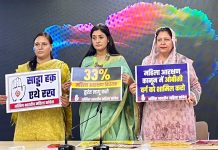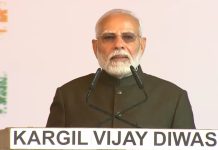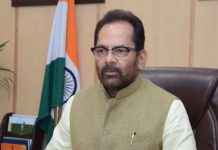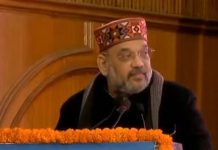
The land of Ram continues to court controversy. The allegations of corruption surrounding the land deal in Ayodhya by Ram Janmabhoomi Teerth Kshetra Trust is just an addition to the long list of such cases
There may be something in the land of Ram that it always courts controversy: remains more in the eye of a storm than leading towards a closure of issues.
There are several dates to the Ram mandir dispute that can be quoted.
One can go back to the year 1528 when Babur, the first Moghul Emperor, is believed to have constructed the Babri Masjid; or even further back to 9,00,000 years ago or the Treta Yug, better understood as the second best of the four yugas, in Hinduism. It is believed that Lord Ram was born in the Treta Yug in a room located under what later was the central dome of the Babri Masjid.
Cut to 1885 when Raghbir Singh, a Mahant, moved court for permission to construct a temple in the vicinity of the Babri Masjid. Or 1949, when idols of Lord Ram appeared from nowhere inside the mosque.
Much water has flowed under the bridge but it is between 1984 and 1989 that politics took centerstage with the Vishwa Hindu Parishad, popular as the VHP, launching a campaign for the construction of a Ram Temple at his birthplace.
The movement gathered steam after BJP’s L.K.Advani launched his Rath-yatra. Two dates will always remain etched in History: December 6, 1992, as a black day, when the Babri Masjid was demolished and November 9,2019 when a Constitution Bench cleared the way for construction of the Ram temple at the disputed site.
As what is being dubbed “a crumb” it ordered the government to provide five-acres of land to the Muslims at a prominent place in Ayodhya. It was a kind of a fait accompli for the Muslims who grudgingly accepted the Court verdict on grounds that “it was the wish of Allah”.
Henceforth, the BJP started preparation to construct the temple, beginning with the customary ritual of a bhoomi-pujan at Ayodhya performed by none other than Prime Minister Narendra Modi.
According to senior functionaries of the Temple Trust, the construction will be completed within three years. While there is no sanctity to this deadline there sure is political significance to the three- year time period.
A simple calculation puts it to 2023, by which time the Trust intends to have the temple ready. The general elections are due a year later: in 2024.
It is, therefore, prudent for the BJP to aim for the completion before that, because riding on the bandwagon of honouring the promise and gifting to the nation a magnificent temple will prove handy and help erase past mistakes and failures.
While on mistakes, the BJP is on a weak wicket because one of its biggest failures is its mishandling of the second surge of the Corona virus which hit India like a tsunami.
Even if one were to concede that the second surge was worse than expected, it does not absolve the government for not paying heed to warnings that were forthcoming before disaster struck.
Several scientists, including those on the expert advisory panel handling genome sequencing had flagged the “high concern” about the new and a more contagious variant resulting in Covid cases and deaths rising exponentially: “a kind of warning that we were heading towards danger” to quote a scientist: “The Government did not do enough”, he said categorically.
Hence the people’s anger at the Government’s lack of preparedness and it being absent from the scene, at least visibly, when it was needed the most.
The perception was that all consequential leaders and policy makers, including Prime Minister Modi himself, were busy campaigning for the forthcoming elections and hence oblivious of the danger that was unfolding.
The result: people were gasping for oxygen, hundreds and thousands died and the government was missing in action, as it were. The common refrain: “We have been abandoned…and left to die”.
The blame game between the non-BJP ruled states and the Centre continued but it did little to assuage feelings or bring back the dead. So irrespective of the claim that the government did its best, the common man felt shortchanged.
Anger translated into reversals in the election results be it the BJP losing the state of West Bengal despite pulling all sops or its dismal performance in local body polls including in strongholds like Ayodhya and Varanasi.
Consequently, the current trend is an anti-BJP mood with Prime Minister Modi also in the eye of a storm. Add to that the Opposition mudding the waters.

For starters, Aam Aadmi Party’s Sanjay Singh, an MP, has hit where it hurts the most. He has alleged dubious land deals and misappropriation of funds which were originally meant for the construction of the temple. He has alleged that land worth rupees two crores was bought at an inflated price of 18.5 crores by the Ram Janambhoomi Trust and this, if Singh is to be believed, was done “within a matter of minutes”. According to Singh: “The land was bought at 7.10 pm for rupees two crores and at 7.15 pm it was sold to the Trust for 18.50 crore”.
Even while the Trust has rubbished these allegations and dismissed them as “politically motivated”, Singh is not the one to give up: “The price of land has been increased by 5.50 lakh per second and 3.30 crore per minute”.
Nitty gritty apart, the fact remains that Singh and AAP have fanned an issue which will raise more questions than provide answers. By bringing the temple construction under a cloud, the AAP MP has taken the sheen off the BJP’s political talisman of going to town with its temple campaign. With the Uttar Pradesh elections less than a year away, there is enough ammunition with the Opposition to train its guns on the BJP.
It is in this context that one must not miss the Opposition chorus which is cashing in on what Sanjay Singh has raked up.
Even while he calls it a “coincidence”, close on the heels of Singh’s disclosure came the attack from Samajwadi Party’s Pawan Pandey with the same set of allegations about funds embezzlement and land scam. There were two separate press conferences at different venues but the allegations were ditto: inflated price and the per minute calculation.
The Congress was not far behind. It jumped in too.
Congress General Secretary Priyanka Gandhi Vadra tweeted that misuse of donations is “a sin”; Rahul Gandhi hit out at the BJP on grounds that betrayal in Lord Ram’s name is unrighteous;Congress spokesman Randeep Surjewala demanded an audit by the apex court and members of the Uttar Pradesh Women Congress staged a demonstration near the official residence of Uttar Pradesh Chief Minister Yogi Adityanath.
Irrespective of whether these parties come together in the forthcoming state elections, the chorus in the elections will be misuse of funds and breach of faith in the construction of Ram temple.
Whether this campaign will upset the calculations of the BJP remains to be seen but it sure will puncture its pro-temple campaign. Therefore in what is being seen as a “temple versus temple” politics, the BJP would flag fulfilling its giving the temple promise with the Opposition countering it with scams in the name of God.
While this may serve a limited purpose, it is enough to act as a spoiler in 2022. However, much depends on how far the Opposition can sustain the tirade.
For the general elections due in 2024, the Modi government is perhaps banking on public memory being short: hoping against hope that time will erase the negligence and apathy during the second surge.
There are two sides of this argument: One that those who have lost one of their own, and there are countless who have, are unlikely to forgive the Modi-led government, leave alone ever forgetting the tragedy.
While it is true that people died last year too, but they did because of the virus and not the Government. This time around, the perception is that the majority of the people died more for want of oxygen than the virus itself.
Hence the Government’s role is under the scanner and the people seem determined to avenge what was inflicted on them. Were this to happen, the BJP may have to run for cover.
As against this, the BJP is banking on the time lag between the second surge and the general elections which are more than two years away. In its calculation, two years down the line even if people remember the anomalies of the government, the impact will lessen or at least so the government hopes.
At another level, it is being argued that the anger is palpable among the urban and middle classes and has not penetrated into the rural segments. In any case the poor are fatalistic. They take the finality of Death as God’s will and are unlikely to hold it against the government. Also they are too naive to understand the complexities of what the government did or failed to do. Consequently the BJP hopes to escape their wrath. Also the game plan seems to give enough sops through the two years with welfare schemes and cash transfers to make up for its lapses.
Having said that, one cannot ignore the moves by the Opposition parties who are gearing up to take on the BJP because they feel that the credibility of the Modi government is at its lowest and if they do not strike now then it may never be. The problem however is that it is not speaking in one voice and fears are that they may not hold together for long.
As of now, the situation is fluid: there are issues that can be exploited but is the Opposition geared up? Will the BJP recover lost ground? Or has the countdown begun?
There are questions and more questions but no clear answers. At least not yet.
tehelkaletters@gmail.com













